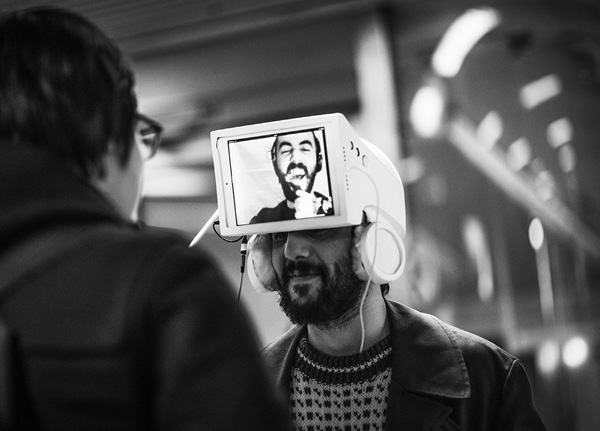
MONITOR MAN
first performed on November 15, 2016
Helsinki, Finland
performed five times in 2016
YASSINE KHALED
Helsinki, Finland
852133694y852133694a852133694s852133694s852133694i852133694n852133694e852133694k852133694h852133694a852133694l852133694e852133694d8521336949852133694@852133694g852133694m852133694a852133694i852133694l852133694.852133694c852133694o852133694m
MONITOR MAN
YASSINE KHALED
As a child in Morocco, I used to play video games and imagine that one day I would be able to travel virtually. When we first had internet connection in our home, I started to discover new corners of the world. I virtually visited New York via an online public camera. I was stunned that I could see people from another culture in real time. At the time, it was revolutionary.
About twenty years later, I found myself doing something close to those childhood dreams. I created a performance in which people from around the world, especially those outside of Europe and Western countries, could virtually walk and talk on the streets of Helsinki. In the performance “Monitor Man,” I created a compelling image and embodiment of virtual communication in a public space. I wore a helmet that had a screen with a real-time connection to a person outside of Europe. With this work, I wanted to materialize the real borders between countries.
“Monitor Man” uses current technology to create the possibility for a random meeting between people who are physically distant. It also manifests the restrictions placed on an individual’s freedom and the inequality of those constraints across different nationalities. I will continue presenting “Monitor Man” in different locations around the Western world.
The idea was initiated when I saw the development of the refugee crisis in 2015-2016. The internet and social media sustain many dreams about Europe for people who don’t live there. These dreams can be about being employed, getting out of poverty, escaping war, or solving environmental problems. Everyone is looking for a brighter future, imagining a more peaceful place.
Since the beginning of my artistic career, my work has been based on questions regarding the conflict between the power/wealth of a few and the powerlessness and poverty of many—one of the world’s biggest problems. Throughout the world, there are millions of people who live in prosperity while millions more are destitute. The unequal distribution of power has become a common factor in most human societies. Social and cultural advantages, such as education and lifestyle, determine the level of comfort and prosperity of individuals.